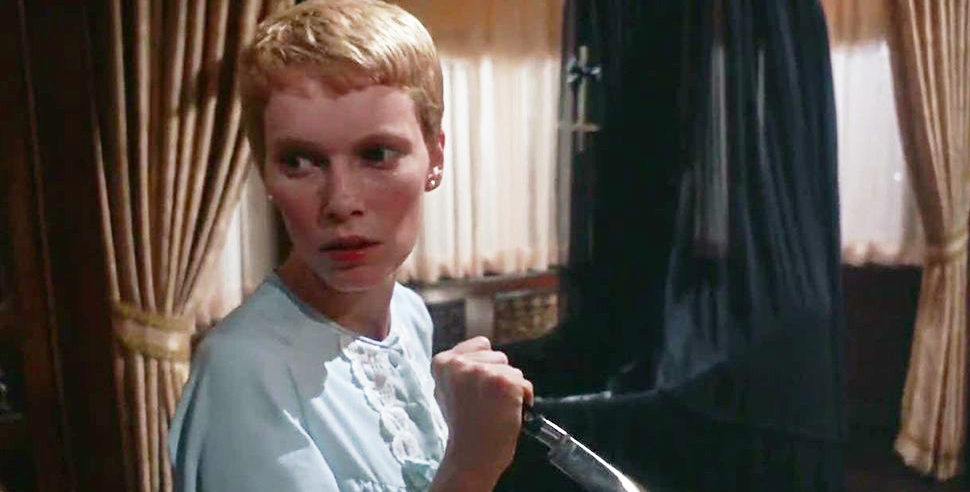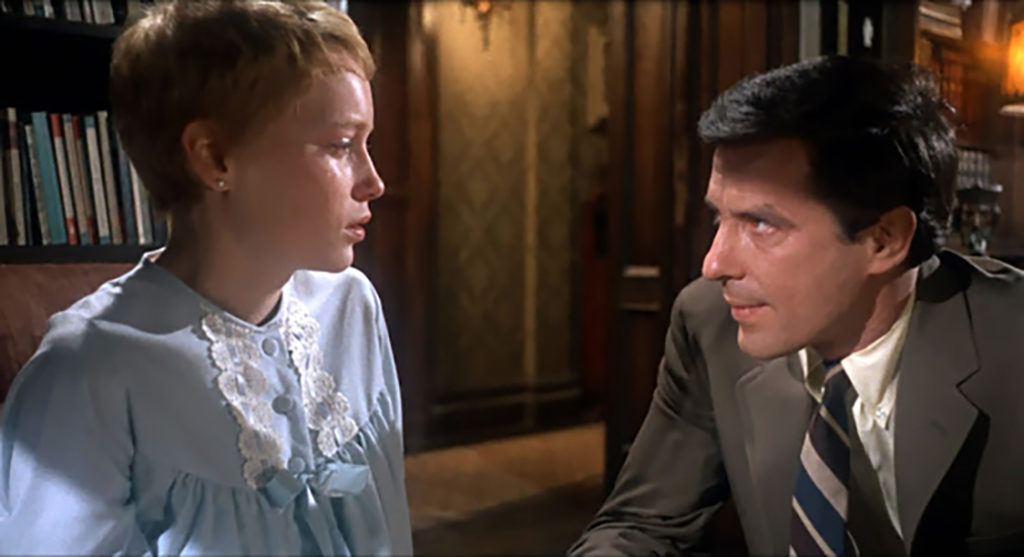From the on-set, it’s clear that “Rosemary’s Baby” is the stuff of nightmares. It is truly a creepy film, which leaves the viewer in a state of shock, numb and reeling as they try to piece together just what has occured on screen. The film is based on Ira Levin’s novel about modern-day witches and demons. But it is much more than just a suspense story; the brilliance of the film comes more from Polanski’s direction,who clearly has a warped, disturbed mind. There’s something perverse about Polanski’s attitude towards women and it’s haunting to watch; somehow this feels like a glimpse into his self consciousness. Despite his reputation off-screen, Polanski knows how to pull off a truly effective horror film, delivering an eerie film dripping in cynicism and paranoia.
The film follows Rosemary (Farrow) and Guy Woodhouse (John Cassavetes) who move into an apartment in a building with a bad reputation. They discover that their neighbours are a very friendly elderly couple named Roman and Minnie Castevet, and Guy begins to spend a lot of time with them. However, very quickly strange things start to happen: a woman Rosemary meets in the washroom dies a mysterious death, Rosemary has strange dreams and hears strange noises and Guy becomes remote and distant. Then Rosemary falls pregnant and begins to suspect that her neighbours are somehow behind this, but what is their end game?
Polanski gives the audience a great deal of information early in the story, and by the time the movie’s halfway over we’re pretty sure what’s going on in that apartment next door. When the conclusion comes, it works not because it is a surprise but because it is horrifyingly inevitable. Rosemary makes her dreadful discovery, there’s nothing the viewer can do but simply watch in horror as the events slowly unfold. The truth and reveal is even worse than Rosemary’s feverish imagination and mounting paranoia paints it, but Polanski keeps things as disturbingly unsettled and ambiguous as he can right up to the end. And that ending…never has a horror film ended in such a bleak, depressing way. However, every baby deserves a mother, right?

The success of the film lies in the performances of Mia Farrow, as Rosemary, and Ruth Gordon, as Mrs. Castevet, the next-door neighbor. The two help propel each other, and their interactions with one and another seem believable. We have all been there, trying to deal with the nosy next door neighbour. The viewer fully believes that these two women live next door to each other. It plays on our distrust of our neighbours and our fear of other interfering in our lives, the idea of someone pulling the strings, controlling our outcomes without our knowledge. This is very much Farrow’s film, who is in all but a very few shots. Polanski exploits her vulnerability and childish looks; she looks so fragile and about to burst into tears in almost every shot. Even before she gets pregnant she wears shapeless little smocks and flat, little girl shoes. Her short haircut later in the film makes her appear even more vulnerable.
“Rosemary’s Baby” is a film strongly tied to the era that produced it, addressing a number of social issues central to the women’s movement of the ’60s and ’70s, particularly those concerning mental health and pregnancy. It’s a strong horror film which captured the feelings of a society in crisis and a woman struggling to have her voice. Strangely, “Rosemary’s Baby” feels relevant now more than ever.
– by Bianca Garner


